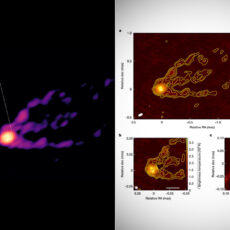
Ever wonder what might happen if you put 4 million suns in a black hole over New York? If so, Epic Spaceman shows this hypothetical situation and explains how they work as well as their connection to galaxies.
Visualizing a 4.3 million solar mass black hole isn’t so easy, as it would probably take millions of years for one to reach this size. For comparison, you can fit more than a million Earths into each sun, so cramming 4.3-million of them into a single black hole is mind boggling to say the least. Speaking of black holes, the largest known supermassive black hole can be found in TON 618, a hyperluminous, broad-absorption-line, radio-loud quasar. This monstrosity feeds on intensely hot gas and matter in an accretion disc.
- ADVANCED TECH MEETS ICONIC DESIGN: The NexStar 8SE pairs Celestron’s legendary orange tube with a fully computerized GoTo system—ideal for those...
- 8-INCH SCHMIDT-CASSEGRAIN OPTICS: The large 8" aperture gathers enough light to reveal fine lunar details, cloud bands on Jupiter, and deep-sky...
- FULLY AUTOMATED GoTo MOUNT WITH NEXSTAR+ HAND CONTROL: Use the NexStar+ hand control to select from a 40,000+ object database. The computerized mount...










